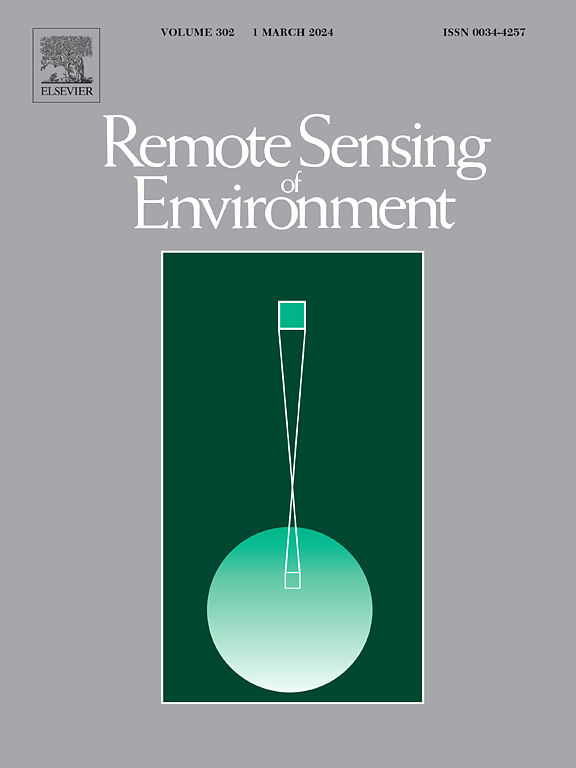土壤遥感光谱指数:定义、普及和问题。关键概述
IF 11.4
1区 地球科学
Q1 ENVIRONMENTAL SCIENCES
引用次数: 0
摘要
光谱指数作为遥感研究的有力代理,可以从原始或大气校正的光谱数据中产生有意义的环境解释,并表征和量化地球表面各种物体的一些重要特性。然而,尽管从民用卫星发射到现在,随着时间的推移,已经开发了许多光谱指数,但其使用中的一些关键问题,如可比性,仍然很少研究,这可能导致不正确、不一致和不可靠的结果。在这项研究中,我们收集了可能用于土壤研究的各种环境成分(植被、水和土壤)的471个光谱指数,并追踪了它们在过去几十年的科学出版物中的受欢迎程度。文献计量分析显示,随着地球观测卫星技术的进步,光谱指数的兴趣和利用日益增加。基于这两篇文献,为了补充和说明,我们讨论了使用光谱指数的命名混淆、可比性、适用性、准确性权衡和可重复性等问题。总体而言,本综述提供了广泛的光谱指数列表,包括土壤指数和与土壤相关的指数,这些指数可用于通过遥感表征这些环境成分。它提醒人们注意,为了防止科学陷阱,必须避免一些误用和混淆。不同光谱指数、传感器和校正方法之间的比较,突出了有用的土壤光谱指数的误用和非标准化做法可能对土壤性质制图和监测产生的混乱影响。对光谱指数在土壤遥感中的合理使用提供了一些见解。本文章由计算机程序翻译,如有差异,请以英文原文为准。
Spectral indices in remote sensing of soil: definition, popularity, and issues. A critical overview
Serving as a powerful proxy in remote sensing studies, spectral indices can generate meaningful environmental interpretation from either raw or atmospherically corrected spectral data, and characterise and quantify some important properties of various objects on Earth’s surface. However, while numerous spectral indices have been developed over time, since the very launch of civilian satellites until now, some critical issues in their usage, such as comparability, remain scarcely studied, which may lead to incorrect, inconsistent, and unreliable results.
In this study, we collected 471 spectral indices of various environment components (vegetation, water, and soil) that might be leveraged for soil studies, and traced their popularity in scientific publications over the past decades. The bibliometric analysis revealed a growing interest and utilisation of spectral indices as Earth-observing satellite technology advanced. Based on both literature and, for sake of complementation and illustration, some targeted regional-scale case studies, we discuss the issues of naming confusion, comparability, applicability, accuracy trade-offs, and reproducibility of using spectral indices.
Overall, this overview provides an extensive list of spectral indices, both soil indices and soil-related indices, that can be useful for characterising these environment components by remote sensing. It draws attention to some misuses and confusions that must be avoided to prevent scientific pitfalls. The comparisons between different spectral indices, sensors, and correction methods, highlight the confusing effects that the misuse and non-standardised practices of the spectral indices useful for soil, may have on soil property mapping and monitoring. Insights to the judicious and appropriate usage of spectral indices in the remote sensing of soil are provided.
求助全文
通过发布文献求助,成功后即可免费获取论文全文。
去求助
来源期刊

Remote Sensing of Environment
环境科学-成像科学与照相技术
CiteScore
25.10
自引率
8.90%
发文量
455
审稿时长
53 days
期刊介绍:
Remote Sensing of Environment (RSE) serves the Earth observation community by disseminating results on the theory, science, applications, and technology that contribute to advancing the field of remote sensing. With a thoroughly interdisciplinary approach, RSE encompasses terrestrial, oceanic, and atmospheric sensing.
The journal emphasizes biophysical and quantitative approaches to remote sensing at local to global scales, covering a diverse range of applications and techniques.
RSE serves as a vital platform for the exchange of knowledge and advancements in the dynamic field of remote sensing.
 求助内容:
求助内容: 应助结果提醒方式:
应助结果提醒方式:


